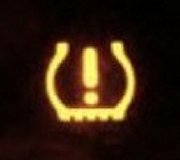Dealership mechanics are trained in factory-installed equipment. Modifications such as larger wheels means there's less tire to flex and they wear differently. The best anyone can do is to guess at different settings for camber and / or toe, and try it. The actual numbers have nothing to do with tire size, and the alignment itself doesn't change when installing different wheels and tires. The alignment settings can be altered to cover up other issues caused by the different tires and wheels.
If anything was done to alter the ride height, all bets are off. Chalk it up to being not as smart as the engineers who designed the suspension system. The best you can hope for here is to rotate the tires front to back in as little as every 5,000 miles. The two wheel drive uses upper and lower control arms instead of the solid front axle used on 4wd trucks. By raising or lowering the suspension, the control arms go through different arcs as when they're at their design height. That causes the tires to tip in and out more is the truck goes up and down over bumps.
Also, if the new tires are wider than the originals, you will likely have excessive wear on the outer edges unless positive camber is reduced. This again is due to the tires' reduced ability to flex.
Caradiodoc
Monday, December 7th, 2009 AT 7:33 AM


